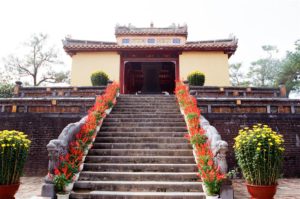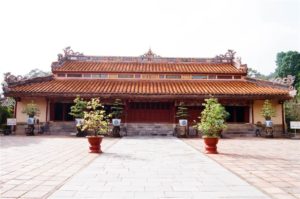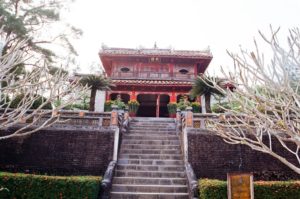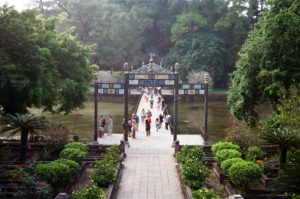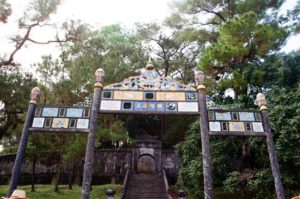Old-Time Vietnam – The Royal Mausoleum of Minh Mang
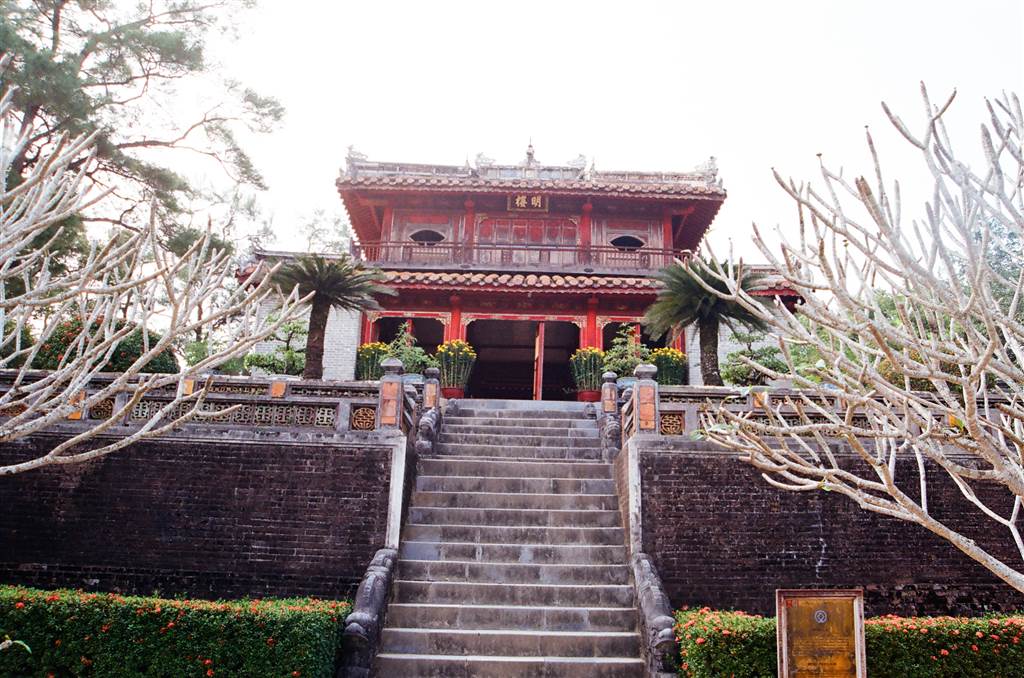
I had better hurry, for there were two more royal tombs to visit. The taxi driver took me to the next royal tomb, the Royal Mausoleum of Minh Mang.
Minh Mang as a Nguyen Emperor
Mr. Truong, who took me to the DMZ, told me that Minh Mang was a well-liked and respected Nguyen Emperor. Born Nguyen Phuc Dam, he succeeded the Nguyen Dynasty’s founding Emperor Gia Long as the second Emperor. His rule lasted 21 years from 1820 to 1841. The reign title Minh Mang means “the bright favor of Heaven.”
Like Tu Duc, who came after him, Minh Mang was a staunch supporter of Confucianism. As such, he generally opposed foreign influences on Vietnam. During his reign, he has, time after time, rejected the invitations from the West to form commercial relationships. That includes the first attempt by the United States of America to establish commerce with a country in East Asia (during President Andrew Jackson’s administration).
However, he did take the West seriously by studying their innovations in science and technology. He would request firearms, mechanics, books and even vaccination from the West. Yet French colonialism was brewing during his reign. Despite his later attempts to establish commerce with the West by sending delegations for negotiations, Minh Mang’s strong opposition against western missionaries, to the extent of executing some French Catholics, would eventually cause increasing animosity from France. In time, this would give rise to support in France to invade and later successfully colonize Vietnam.
He has earned favour with the Vietnamese people historically because he did care about the lives of the peasants, as expressed in his land reform policies. He was also against forced labour.
Minh Mang was much of a scholar himself and he also composed poems. He has shown his love for scholarship by the display of 600 carved poems in his mausoleum. He has left an everlasting mark on the Imperial City of Hue also, as under his reign he ordered the construction of many edifices in the Imperial City. The remarkable Ngo Mon was one, and it is still standing today.
The Royal Mausoleum of Minh Mang (Lang Hieu)
As with the Royal Mausoleum of Tu Duc, the Royal Mausoleum of Minh Mang serves as both a place of burial and a place of worship. Construction for this mausoleum took three years from 1840 to 1843.
The construction of Minh Mang’s royal tomb has broken new grounds in terms of the formality in its layout. The main burial structures were built in one straight line along the main axis. In runs in the east-west direction and it is called the Holy Axis. The features common to all royal tombs, such as the gate (Dai Hong in this tomb), the salutation court, the stele house, the temple (Sung An Temple), the pavilion (Minh Lau Pavilion), and finally the Buu Thanh and Huyen Cung (where the Emperor’s remains were buried), are spread along the Holy Axis. All other minor structures on the sides are symmetrical. Finally, as with the Royal Mausoleum of Tu Duc, a 2000-meter stone wall surrounds this royal tomb.
Again, in imperial Vietnam the middle way was reserved for the king only. Everyone else had to go via the sides. In this mausoleum, that tradition is honored. The middle entrance (with a non-restored gate) had only opened once, and that was when Emperor Minh Mang died and his coffer went through it for final burial. Since then, the gate has remained shut.
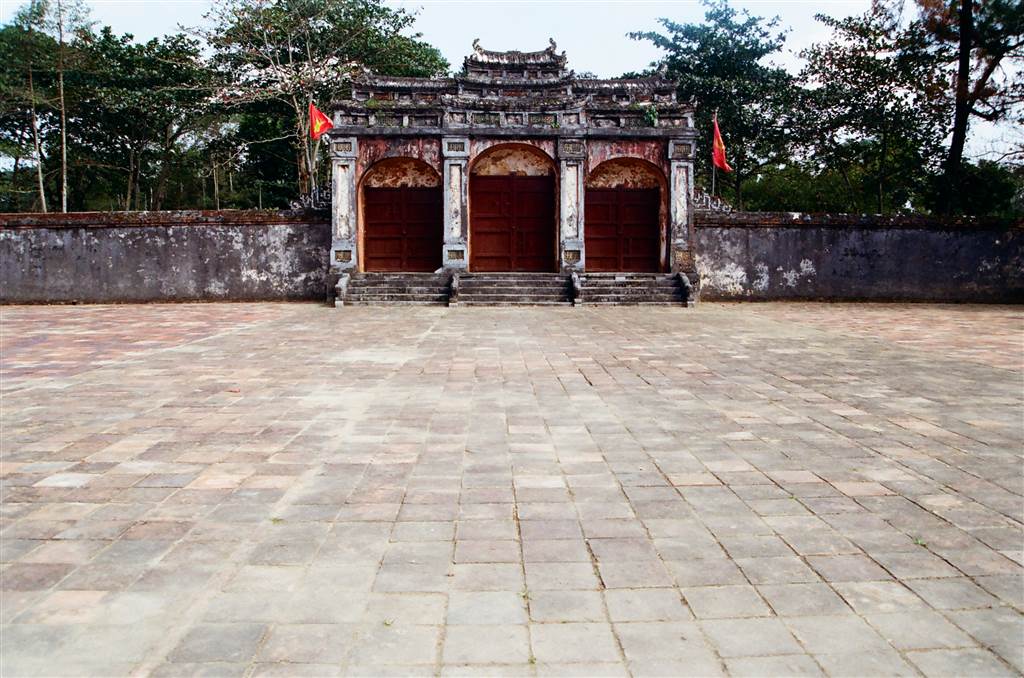
The Huyen Cong, in this case the Mound, is meant to be where the Emperor was laid to rest. The Buu Thanh is the 285-meter long stone wall that protects the Mound. On the death anniversary of Minh Mang, the mound is open for observance by the public.
The royal funeral itself was somewhat mysterious. Minh Mang’s coffer, having gone through the now-shut central entrance of the royal tomb, then went through an underground channel. This channel was then sealed permanently. A tour guide there was telling her group that, although standard history had it that the Emperor’s final resting place was in the mound, actually nobody knew where exactly the body was buried in this site.
Photos: Proceeding through the main structures of the Royal Mausoleum of Minh Mang along the Holy Axis
Some Thoughts at the Royal Mausoleum of Minh Mang
I went through the Holy Axis quickly. The mound was in sight, and I passed by two gates. One said in Chinese, “fair and upright,” and the other one said, “brilliant and upright.” In both of these phrases, the word “minh” obviously refer to the reign title of Minh Mang.
As compared to the Royal Mausoleum of Tu Duc, my impression of the Royal Mausoleum of Minh Mang was not as favorable. The feeling of tranquility in this Mausoleum was similar, as there are also nice lakes at the eastern and western ends that envelope the structures on the Holy Axis. However, this groundbreaking, new formality in layout clearly shows an emphasis on the authority of the Emperor. Surely, Minh Mang deserves all the respect given his merits, but perhaps the royal tomb of Tu Duc is more welcoming, more relaxed, and thus invites my appreciation more readily so.
The mound was out of bounds for visitors that day. I certainly did not intend to disturb Emperor Minh Mang in his sleep.
And I did have some time to visit the last royal tomb, the Royal Mausoleum of Khai Dinh.
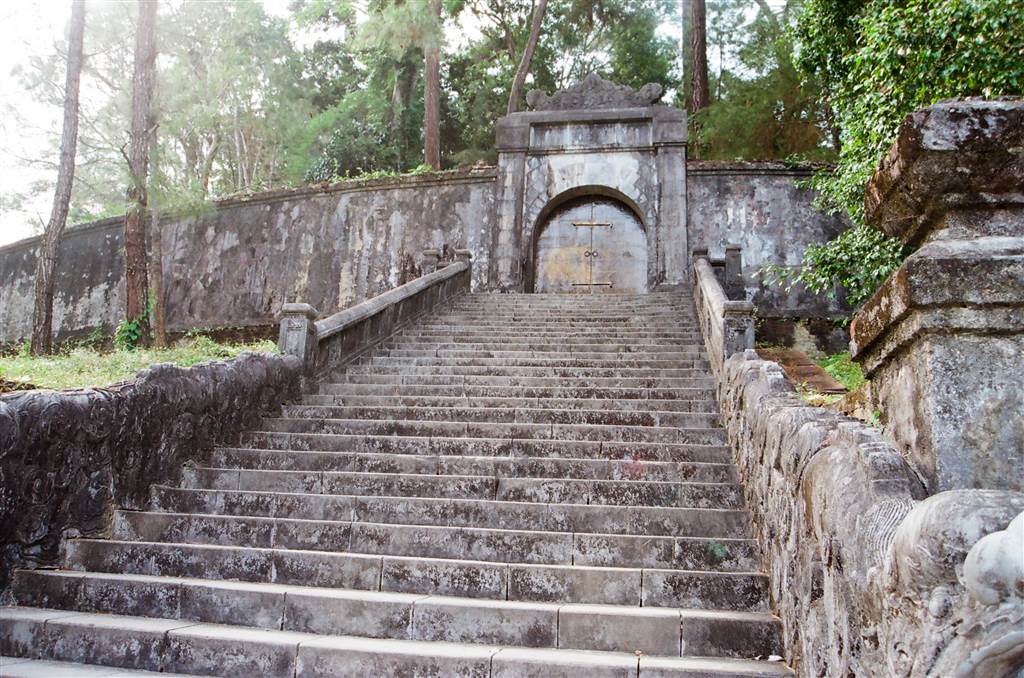
Photo: Huyen Cong (the Mound), where Minh Mang is buried.
Sources
Historical descriptions on site.
The Lonely Planet on Vietnam
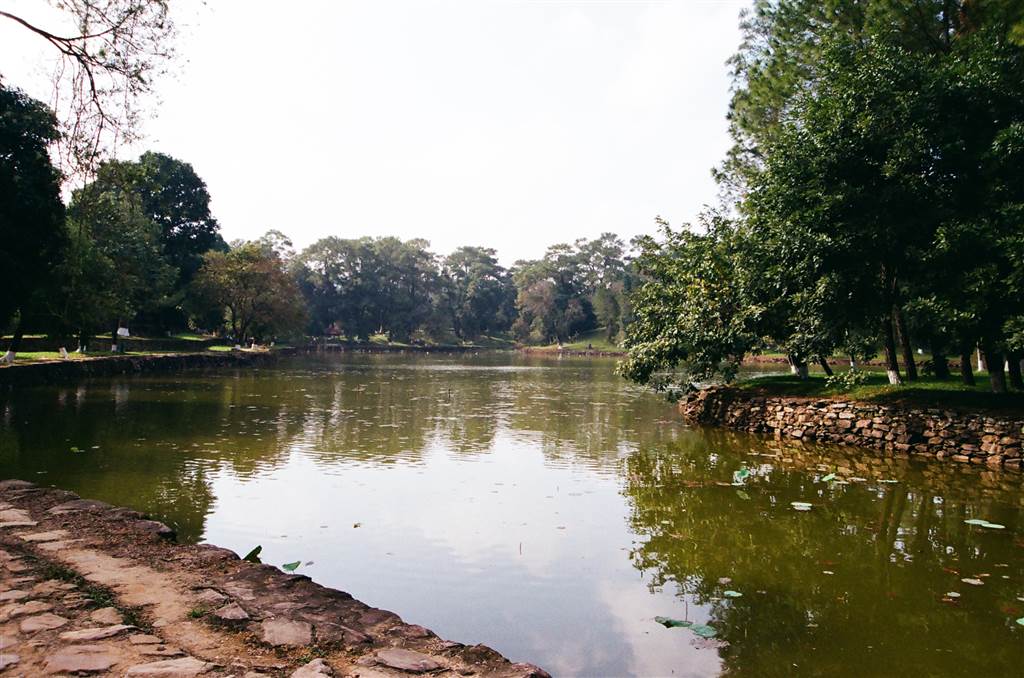
Photo: the Trung Minh Lake at the Minh Mang’s tomb

